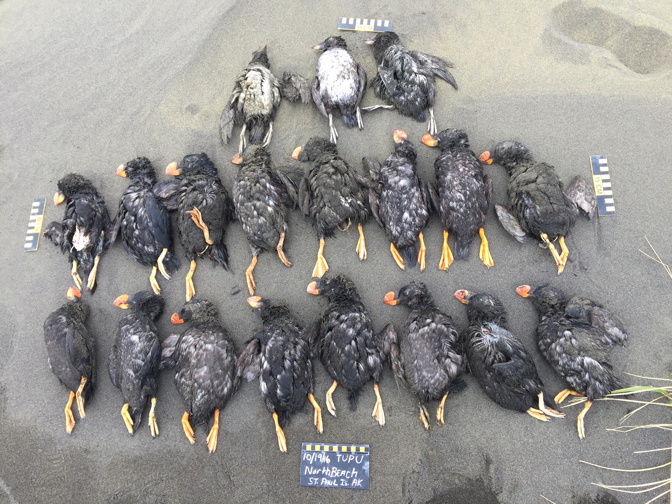Why Hundreds of Puffins Washed Up Dead on an Alaskan Beach
This latest mass-mortality event is another sign of the Arctic’s rapidly changing climate.
ED YONG
EXCERPT:”
What killed these birds? Most of them were intact, with no signs of either predator attacks or disease. Some of them had saxitoxin—a potent poison made by algae—in their stomach, but at levels almost 100 times lower than what would be considered safe for humans to eat. Instead, the most likely cause of death was starvation. The birds were extremely thin, with weak flight muscles and very little body fat. “They literally didn’t have enough to eat and became weak to the point of death,” says Julia Parrish of the University of Washington, who led the study.
Tufted puffins look like fancier versions of the more widely known Atlantic puffins, with elaborate yellow eyebrows that sweep backwards down their neck. On land, they have a clownish, goofy disposition. But in the sea, they become grace personified, using their streamlined body and sickle-shaped wings to fly underwater in pursuit of small fish.
But what if there are no fish to pursue?
The climate of the Bering Sea is changing rapidly. In recent years, the sea ice that would have extended southward in the winter has become unprecedentedly thin and sparse. And that has affected everything from tiny plankton to titanic walruses.”




